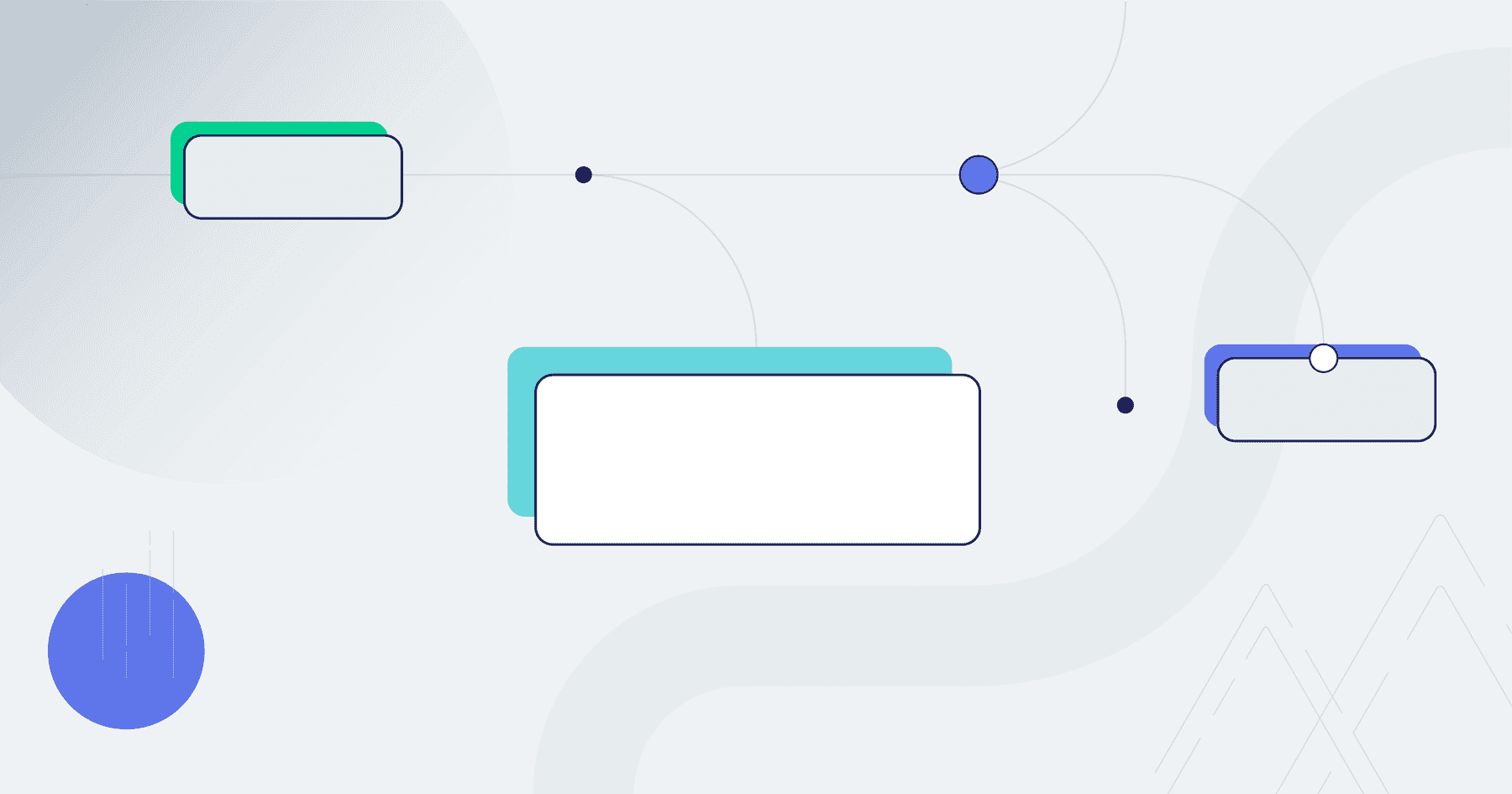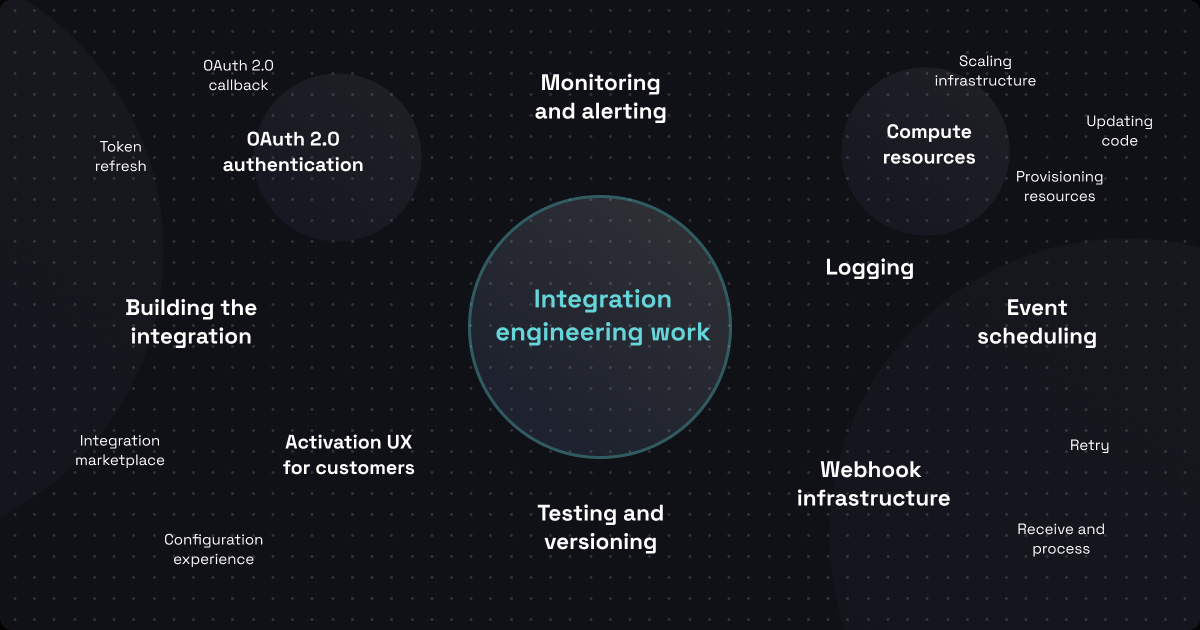Integrations might be a dirty word if you are a B2B SaaS product leader. You and your team have probably spent far more time planning, creating, and fixing integrations than you would like to admit. But you are also familiar with typical reasons for using an embedded iPaaS for your integrations:
- It makes integration development faster and easier.
- It enables customer-facing teams, not just devs, to build and support integrations.
- It comes with connectors, pre-defined logic, and infrastructure.
Despite this, you may be skeptical that such a solution would work for your unique situation. You've seen the not-so-useful results of other low-code dev tools. You've learned that introducing a new tool often means more dev workarounds instead of added efficiencies.
But, most importantly, you may be concerned that an embedded iPaaS won't address your unique situation, that there isn't an integration tool that fully satisfies your customers' integration requirements, and that getting the wrong tool might even set your integration efforts back by months.
These are valid concerns. It wasn't that long ago that several of us here at Prismatic were working for a B2B software company with hundreds of integrations. We were at the point where more than 50% of our development effort was going to integrations, and we weren't moving the core product forward the way we wanted to. We looked for a tool to support our integrations and couldn't find one. There were helpful features in various software packages, but none included everything we needed to build, deploy, and manage integrations with our customers' other apps. In short, no first-class embedded iPaaS solutions were available for B2B SaaS companies.
But that is no longer the case. Prismatic's embedded iPaaS is helping SaaS product leaders in many industries build powerful, reusable, productized integrations for their customers. We created Prismatic specifically for B2B SaaS companies, using a team with experience creating hundreds of integrations.
While some of your integrations may seem particularly problematic, chances are they are excellent examples of the real-world integrations we built Prismatic to address. Let's look at the types of integrations you may be skeptical you could create with an embedded iPaaS.
Three types of integrations that are not easy
Some B2B SaaS integrations are simple. But that's not most of them. Let's look at those scenarios and see how Prismatic handles them:
- Industry-specific and legacy integrations
- Complex integrations
- Customer-specific integrations
Industry-specific and legacy integrations
Problem: Integrations with Salesforce or HubSpot are common because they are horizontal solutions that companies across every industry use. Both apps have well-documented APIs, and many integration tools offer pre-built API connectors.
Industry-specific (niche/vertical) integrations are another story. Many industry-specific SaaS apps lack standard APIs. And many integration tool vendors don't offer pre-built API connectors for niche applications because those connectors add no value for most of their customers.
In addition, legacy apps may or may not have standard APIs and may be using non-standard data formats and character encoding. Since these systems may not be directly accessible via standard web protocols (HTTP and HTTPS), devs often need to jump through all sorts of hoops to ensure that data can be transferred between these systems and SaaS apps.
Answer: Prismatic has standard API connectors to many common SaaS apps, but it also supports the creation of custom connectors for industry-specific apps. Your devs can build precisely what an industry-specific app needs by wrapping the available API in a custom connector.
And, for those situations with legacy apps with no standard API or no API, Prismatic has components to facilitate file transfers, work with message queues and brokers, build direct database connections, and write any custom code needed to solve these challenging integration tasks.
What our customers say: "Prismatic makes connecting different platforms a breeze. You get the power of native integrations with the convenience of pre-built components that work right out of the box. When you need something more customized, you can write code directly in the browser or develop custom components in your favorite IDE." – Nate V., Integration Engineer
Complex integrations
Problem: Complex integration scenarios often start simple but become complex as we understand all the requirements. A complex integration might begin with extracting the data, but then you realize the data needs to be converted from one data format to another. And your team needs to map all the data elements from one system to counterparts in the other.
It also needs to pull data from a third system to use in a math formula with a piece of data from the sending system to get the data we need to submit to the receiving system. At the same time, devs need to build logic to notify different people if certain data elements are above or below certain levels, and so forth.
Answer: Prismatic includes the functionality necessary to lay out all the needed complexity in the integration designer. You can manage complexity by breaking it into addressable flows and functions and connecting to as many APIs as necessary. And the platform includes built-in components for notifications, data mapping, data transformations, and many other functions essential to prepare the input data for output.
What our customers say: "In terms of building integrations, it is very intuitive and very well planned so that you can do both the simplest and complex integrations." – Rennan E., Developer
Customer-specific integrations
Problem: Customer-specific integrations are also complex. Customer-specific variables might start with credentials and endpoints, but they don't end there. One or more systems getting input or output from an integration may have highly variable or unstructured data.
As a result, each customer may have unique data mapping requirements. Or some customers may want to send email notifications when receiving new data from an integration, while others need those notifications to be sent via Slack or deposited in a file system.
Answer: Prismatic has built-in configuration tools that allow you to create extensive configuration screens for integrations. Everything from credentials and endpoints to data mapping and specific input functions can be individualized via the configuration. This flexibility ensures that your teams can build and deploy a single integration while configuring it to meet the precise requirements of dozens or hundreds of customers.
You can even white-label an embedded integration designer to give your customers ultimate flexibility when integrating your product with their tech stack.
What our customers say: "Our customers now have an integration marketplace where they can connect and configure their integrations themselves." – Adam J., VP of Engineering
What does an embedded integration platform do?
An embedded integration platform, or embedded iPaaS, is a set of tools that enables a SaaS company to quickly build reusable, configurable integrations to any app in any software category and deliver them to its customers as a seamless part of its product.
Built for challenging integrations
Some integrations are just harder than others. But for all the reasons we've covered, Prismatic shines when solving challenging integration scenarios. At the same time, we make easy integrations even easier.
We designed and built our embedded iPaaS to handle real-world integrations from day one. That's why it's fast becoming the platform of choice for B2B SaaS companies who need to build complex, configurable integrations to any system their customers use.
Schedule a demo if you'd like to see how you can move from "No" to "Yes" for your hardest integration scenarios.




